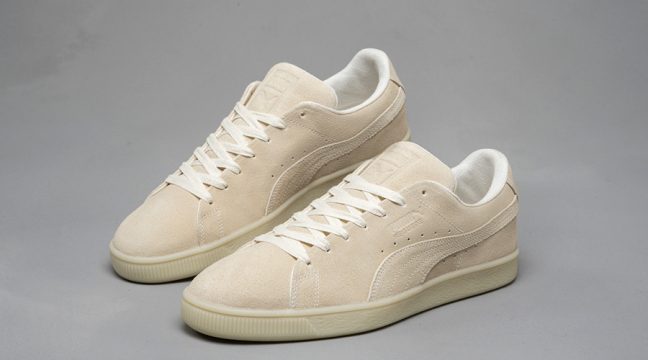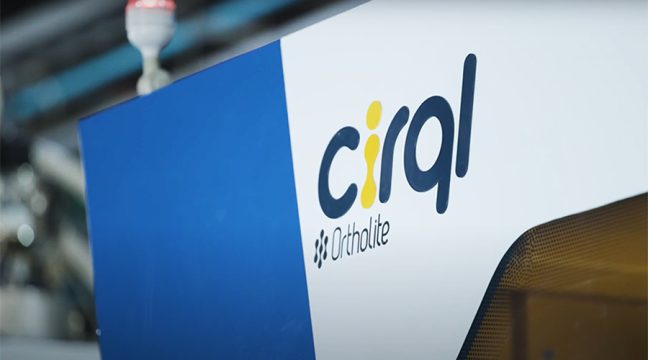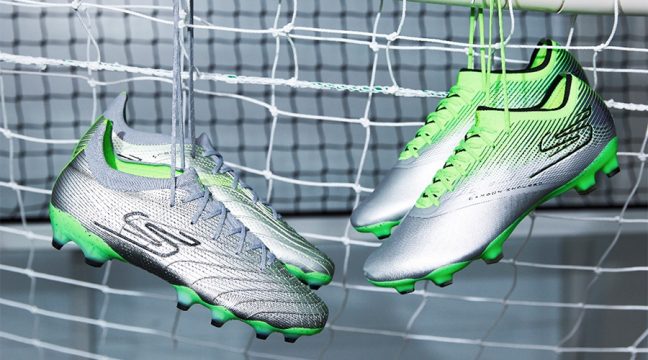Saucony, Inc. reported that net income for the first quarter ended April 1 decreased 23.8% to $3.2 million, compared to $4.2 million in the first quarter of 2004. Diluted earnings per share decreased to 41 cents per Class A share and 46 cents per Class B share in the first quarter of 2005, compared to diluted earnings per share of 58 cents per Class A share and 64 cents per Class B share for the comparable period in 2004.
Net sales for the first quarter decreased 11%, to $41.9 million, compared to $47.0 million in the first quarter of 2004.
John H. Fisher, president and chief executive officer, commented, “As anticipated, our first quarter results were primarily impacted by challenges with our crossover and Originals business in the mall-based retail channel. That said, our domestic technical footwear business, which is at the heart of who we are, remains very strong and we are encouraged about our prospects to further expand our position in the core running market. We continue to focus on product creation and we are excited about our new offerings which will debut over the upcoming months of this year.”
Mr. Fisher continued, “We were pleased with our ability to generate better than expected bottom-line results during the quarter predominantly driven by gross margin expansion. Our gross margin improvement reflects the favorable impact of foreign currency on our international margins and our ongoing efforts to manage our inventory and reduce our product costs.”
Order Backlog
The company's backlog of open orders at April 1, 2005 scheduled for delivery within the next five months (April 2, 2005 – August 26, 2005) decreased 5% to $50.2 million, compared to $53.0 million at April 2, 2004.
At April 1, 2005, the open order backlog for delivery in the next 12 months decreased 4% to $60.2 million, from $62.8 million at April 2, 2004.
Mr. Fisher continued, “Our quarter ending open order comparisons included double digit gains on our domestic technical running footwear category. Offsetting these increases in open orders were decreases in our domestic mid-priced crossover and Originals categories at April 1, 2005, compared to at April 2, 2004.”
The company's cash and cash equivalents and short-term investments decreased approximately $4.0 million in the quarter ended April 1, 2005 from the fiscal 2004 year end balances, due to the use of cash to finance our seasonal working capital needs. Days' sales in accounts receivable, defined as the number of average daily net sales in accounts receivable as of the period end date and calculated by dividing the end of period accounts receivable by the average daily net sales for the period, decreased to 60 days at April 1, 2005, compared to 62 days at April 2, 2004. The number of days' sales in inventory, defined as the number of average daily cost of sales in the inventory as of the period end date and calculated by dividing the end of period inventory by the average daily cost of sales for the period, increased to 85 days at April 1, 2005, compared to 73 days at April 2, 2004.”
Mr. Fisher remarked, “While our first quarter efforts were successful in decreasing our days' sales in inventory from 95 days at our fiscal 2004 year end, we continue to pursue further reductions.”
Net sales for the first quarter of 2005 decreased 11% to $41.9 million, compared to $47.0 million in the first quarter of 2004. Domestic net sales decreased 14% to $31.1 million in the first quarter of 2005, compared to $36.0 million in the first quarter of 2004. The domestic sales decrease in the first quarter of 2005 was due primarily to a 17% decrease in footwear unit volumes, partially offset by a 21% increase in Hind apparel sales. Sales at factory outlet stores deceased 2% in the first quarter of 2005 compared to the first quarter of 2004. International net sales decreased 2%, to $10.8 million in the first quarter of 2005, compared to $11.0 million in the first quarter of 2004. The international sales decrease in the first quarter of 2005 was due primarily to lower average wholesale per pair footwear selling prices and, to a lesser extent, lower sales of Saucony and Hind brand apparel, partially offset by favorable changes in foreign exchange rates as compared to the first quarter of 2004 and a 5% increase in footwear unit volumes. Saucony brand footwear and apparel accounted for approximately 85% of first quarter 2005 net sales, compared to 88% of the first quarter 2004 net sales, with a combination of Hind apparel and factory outlet stores net sales accounting for the balance in each period.
Gross Margin
The company's gross margin in the first quarter of fiscal 2005 increased 140 basis points to 42.0% compared to 40.6% in the first quarter of 2004, due primarily to favorable currency exchange due to the impact of a weaker U.S. dollar against European and Canadian currencies and, to a lesser extent, improved margin in the Saucony domestic footwear and Hind brand apparel businesses due to product costs reductions and improved margin in the factory outlet division. The Saucony domestic footwear margin increase was mitigated by a change in sales mix to increased footwear unit volume of special makeup and closeout footwear in the first quarter of fiscal 2005. Both of these products carry lower margins than first quality technical footwear.
Selling, General and Administrative Expenses
Selling, general and administrative expenses as a percentage of net sales increased to 30.2% in the first quarter of 2005 compared to 25.8% in the first quarter of 2004. In absolute dollars, selling, general and administrative expenses increased 4%, due primarily to increased professional fees, depreciation and increased operating expenses associated with the factory outlet division expansion, partially offset by decreased print media advertising, account specific advertising and promotion, variable selling expenses, and administrative and selling payroll. The decrease in administrative and selling payroll in the first quarter of fiscal 2005 is due to lower incentive compensation. Selling expenses as a percentage of net sales in the first quarter of 2005 were 13.7% compared to 12.9% in the comparable 2004 period, while general and administrative expenses were 16.5% of net sales compared to 12.9% in the first quarter of 2004.
Non-Operating Income (Expense)
Non-operating income increased in the first quarter of 2005 to $278,000, compared to an expense of $72,000 in the first quarter of 2004. The increase was primarily due to an $88,000 increase in interest income and a $244,000 increase in foreign currency income in the first quarter of 2005, compared to the first quarter of 2004. Interest income increased to $157,000 in the first quarter of 2005, compared to $69,000 in the first quarter of 2004, due to higher interest rates on invested cash balances and short-term investments. Foreign currency income increased to $100,000 in the first quarter of 2005, compared to foreign currency losses of $144,000 in the first quarter of 2004, due primarily to the impact of currency fluctuations on forward foreign currency contracts.
Net Income
Net income for the first quarter of 2005 was $3.2 million, or 41 cents per Class A share and 46 cents per Class B share on a diluted basis, compared to $4.2 million, or 58 cents per Class A share and 64 cents per Class B share on a diluted basis, in the first quarter of 2004. The company used weighted average common shares and common stock equivalents of 7,219,000 and 6,844,000 to calculate diluted earnings per share for the first quarter of 2005 and 2004, respectively.
Net income available to the company's common stockholders is allocated among our two classes of common stock, Class A Common Stock and Class B Common Stock. The allocation among each class is based upon the two-class method. Under the two-class method, earnings per share for each class of common stock is presented. The two-class presentation method is required as a result of the company having two classes of common stock with different participation rights in undistributed earnings.
Mr. Fisher concluded, “Our strategically important domestic technical running footwear continues to build momentum, reflecting our ongoing commitment to innovation and performance and our status as one of the authentic brands in the marketplace. At the same time, we recognize the importance of returning our mid-priced crossover and Originals categories to desired growth levels and we are working diligently to achieve these objectives. We remain dedicated to further improving our platform for long-term growth and increased profitability.”
Second Quarter and Fiscal Year 2005
The company expects fully diluted earnings per share to range from 24 cents to 26 cents for Class A shares and to range from 26 cents to 28 cents for Class B shares for the second quarter of 2005 and to range from $1.25 to $1.31 for Class A shares and to range from $1.38 to $1.44 for Class B shares for the year.
The company expects second quarter net sales to range from $41 million to $42 million. The company expects net sales for the year to range from $163 million to $165 million.
The company expects gross margins of approximately 41% for the second quarter and the year.
The company expects selling, general and administration expenses of approximately 33% of sales for the second quarter and of approximately 31% of sales for the year.
SAUCONY, INC. AND SUBSIDIARIES
Condensed Consolidated Statements of Income
For the quarter ended April 1, 2005 and April 2, 2004
(Unaudited)
(in thousands, except per share amounts)
Quarter Quarter
Ended Ended
April 1, April 2,
2005 2004
Net sales $ 41,851 $ 46,969
Other revenue 96 179
Total revenue 41,947 47,148
Costs and expenses
Cost of sales 24,257 27,912
Selling expenses 5,751 6,058
General and administrative expenses 6,894 6,078
Total costs and expenses 36,902 40,048
Operating income 5,045 7,101
Non-operating income (expense)
Interest income 157 69
Interest expense (3) --
Foreign currency losses 100 (144)
Other 24 3
Income before income taxes and minority
interest 5,323 7,028
Provision for income taxes 2,083 2,759
Minority interest in income of consolidated
subsidiaries 50 38
Net income $ 3,190 $ 4,231
Per share amounts:
Earnings per share:
Basic:
Class A common stock $ 0.45 $ 0.63
Class B common stock $ 0.50 $ 0.69
Diluted:
Class A common stock $ 0.41 $ 0.58
Class B common stock $ 0.46 $ 0.64
Weighted average common shares and
equivalents outstanding:
Basic:
Class A common stock 2,521 2,521
Class B common stock 4,137 3,801
Total 6,658 6,322
Diluted:
Class A common stock 2,521 2,521
Class B common stock 4,698 4,323
Total 7,219 6,844
Cash dividends per share of common stock:
Class A common stock $ 0.050 $ 4.050
Class B common stock $ 0.055 $ 4.055










